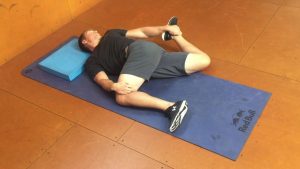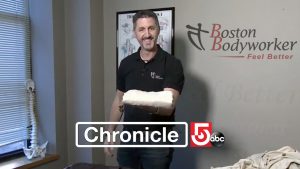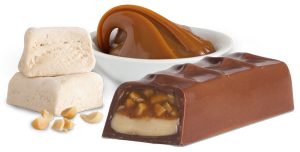No More Back Pain; Easy as 1-2-3
It’s no revelation that the number one complaint we see in our clinic is back pain. Over 85% of us will experience some ‘down time’ with an episode of back pain in our lifetimes. One of the biggest misconceptions is that people believe, perhaps by the previous statistic, that our backs (a.k.a. spines) are brittle. On the contrary, our spines are exceptionally strong and durable structures. The number one recommended remedy for the treatment of back pain is stretching. Makes sense, right? You feel tight? Stretch. Wrong!
The fact of the matter is that research has concluded time and again that our backs need to be more stable and more mobile, not flexible. Typically, when your back is tight, it’s because your brain is telling the surrounding muscles to stabilize or effectively ‘splint’ (think finger splint) the area to prevent further damage. Stretching tissues that are tight will only increase your brains neurological response to tighten. Research has also concluded that flexibility does not equate to less chances for injury. Stability and mobility (of the back) are keys to a healthy spine. Further, understanding that your back is not as vulnerable as you may believe will be your salvation.
Dr. Stuart McGill is a professor at the University of Waterloo and a world renown lecturer and
expert in spine function and injury prevention and rehabilitation. He is constantly challenging the science and forging paths towards literate back health. Among his many achievements in science, he has created what are known commonly as “McGill’s Big Three”. These are 3 exercises he recommends to improve our backs mobility and stability. Granted no regimen of exercise should be cookie cutter, so individual applications will vary. If you feel that you can benefit from these but are concerned about your current back status, consult your physician and talk to him/her about these recommendations by Dr. McGill (side note: if he/she is unaware of Dr. McGill’s work, find another doctor).
Below are the exercises referred to as “McGill’s Big Three”, but there are technically 4 exercises. The first of which is done to determine what your “neutral spine” position is. McGill recommends doing these on a daily basis, just as you would spend time flossing and brushing. If that seems daunting, then you’ve never had back pain. If it seems reasonable, then here’s to never going through it again.
(The following are excerpts taken from Enhancing Low Back Health through stabilization exercise Stuart M. McGill, Professor;Spine Biomechanics, University of Waterloo)
Cat-Camel:
We recommend that the routine begin with the cat-camel motion exercise (spine flexion/extension cycles) to reduce spine viscosity (internal resistance and friction) and “floss” the nerve roots as they outlet at each lumbar level, followed by hip and knee mobility exercises. Note that the cat-camel is intended as a motion exercise – not a stretch, so the emphasis is on motion rather than “pushing” at the end ranges of flexion and extension. We have found that 5-8 cycles is often sufficient to reduce most viscous-frictional stresses.
Curl-up:
The cat-camel motion exercise is followed by anterior abdominal exercises, in this case
the curl-up. The hands are placed under the lumbar spine to preserve a neutral spine posture. Do not flatten the back to the floor. Flattening the back flexes the lumbar spine, violates the neutral spine principle, and increases the loads on the disc and ligaments. One knee is flexed but the other leg is straight to lock the pelvis-lumbar spine and minimize the loss of a neutral lumbar posture. Alternate the bent leg (right to left) midway through the repetitions.
The curl-up is performed by raising the head and the upper shoulders off the floor. The motion
takes place in the thoracic spine – not the lumbar or cervical region. To begin, the hands are
placed under the lumbar region to support a neutral curvature. The exercise is made more
challenging by raising the elbows off the floor. Even more challenging is first performing an
abdominal brace (activating the abdominal muscles), and then curling up against the brace. Hold the posture for 7-8 seconds. Do not hold the breath but breath deeply. Do not increase the challenge by increasing the intensity of the abdominal brace. This will groove desirable motor patterns. Choose the most appropriate level of challenge.
Side Bridge:
Lateral and abdominal muscles (called quadratus lumborum, and the abdominal
obliques) are important for optimal stability, and are targeted with the side bridge exercise. The
beginners level of this exercise involves bridging the torso between the elbow and the knees.
Once this is mastered, and tolerated, the challenge is increased by bridging using the elbow and
the feet. Advanced variations involve placing the upper leg-foot in front of the lower leg-foot to
facilitate longitudinal “rolling” of the torso to challenge both anterior and posterior
portions of the wall, and further groove stabilizing patterns which are transferable to upright tasks.
These are superior exercises in terms of muscle activation, low spine load, and stabilizing
patterns compared to exercises such as performing a sit-up with a twist, for example, that
produce lower muscle activity levels and higher tissue loads.
The beginners side bridge is performed with support from the elbow and knees, while the more advanced variation uses the elbow and feet. Maintain the abdominal brace, a neutral spine and breath deeply.
An advanced level side bridge involves holding the posture on one side for 7-8 seconds and the “rolling”over to the other, and repeating as endurance is increased. It is critical to lock the pelvis to the rib cage, via an abdominal brace, so that the spine remains rigid during the rolling. Finally, add deep breathing while in this posture. The rolling action with the breathing will prepare many people to meet any challenge with a stable spine.
Birddog:
The extensor program consists of leg extensions and the “birddog”. In general, we
recommend that these isometric holds be held no longer than 7-8 seconds. The evidence
supports building endurance with increased repetitions rather than holding time.
The back extensors (both the lumbar and thoracic are important) are challenged with the birddog. But only one half of these muscles are challenged at a time by lifting the alternate arm and leg. This reduces the spine load to about a half of that produced during traditional spine extension exercises such as roman chair extensions. Begin on the hands and knees and hold the posture for 7-8 seconds. Then lower the hand and knee, and “sweep” the floor with them and raise them again for the next repetition. This motion will enhance the stabilizing patterns. Switch sides as appropriate. The abdominal muscle are braced throughout.
To see these exercises in actions, please check out the following video.
Ready to #feelbetter?
You're just a click away from a wicked good massage!
-

60 Minute Massage Gift Card
$170.00 Add to cart -

90 Minute Massage Gift Card
$255.00 Add to cart -

Mini Aer Small Room Air Purifier
$149.00 Add to cart -
Sale!

Thera-Pearl Sports Pack/Hot Cold
Original price was: $14.99.$12.99Current price is: $12.99. Add to cart -

3 Somadome Sessions Gift Card
$135.00 Add to cart -
Sale!

TheraBand® Stretch Strap
Original price was: $19.99.$14.99Current price is: $14.99. Add to cart -

20 Minute Somadome Gift Card
$45.00 Add to cart -

TheraBand CLX Connective Loop
$14.99 Select options
Please Hold the R.I.C.E.
Please Hold the R.I.C.E. I have been in the rehabilitation field since 1992. Since the very beginning I was always told that when treating an acute injury you should follow the age old acronym of R.I.C.E. or Rest, Ice, Compression and Elevation. The concept was originally introduced by one of the most respected names in…
Read MoreHave a Brettzel!
Have a Brettzel! In the world of flexibility and stretching, there are a bevy of stretches that have likely been shown to you over the years. It’s hard to remember them if you don’t consistently do them and the ones you likely DO recall are the ones that are probably easiest for YOU to perform.…
Read MoreTake 5: A Stress Break
Take 5: A Stress Break I will be the first in line to inform you of the benefits of a 60 minute massage treatment. However, what if your massage is not scheduled for another week or worse, not even scheduled? Well, as a firm believer and trumpeter of self-care, here is a pretty neat trick…
Read MoreIs it a Muscle Cramp or Muscle Strain?
Is it a Muscle Cramp or Muscle Strain? Last week when my daughter walked in from cheerleading practice, I noticed her limping. When I asked her why she was limping, she went on to explain what I often hear and have seen from my athletes. Having been fortunate to evade serious injuries until this point…
Read MoreWork From Home Hacks!
With so many of you experiencing a new work environment, you are probably starting to notice that many of the chronic aches and pains you had experienced in the past at work on a daily basis, have seemingly disappeared. In their place however, are a new set of sensations we are experiencing due to such…
Read MoreHow to Fold a Fitted Sheet
Have a ‘sheety’ Valentine’s Day! Today is Valentine’s Day, otherwise known to most as a #greetingcardholiday. As I walked out of CVS this morning, I laughed at the people who were fighting for position in the greeting card aisle. Valentine’s Day is about showing love for someone in your life, not elbowing strangers while cursing…
Read MoreHappiness is Contagious
Happiness is Contagious Maybe mom was right. Research suggests that surrounding yourself with friends and family who are happy can actually increase your own happiness. Scientists at Harvard University and the University of California, San Diego, found that emotions, particularly happiness, have a viral effect in how they spread from one person to another. For…
Read MoreDe-stressing the Commute
De-stressing the Commute Turning Road Rage into Road Sage The average American commuter spends an hour a day driving to and from work. During this stressful, stop-and-go time, it’s likely that blood pressure increases, adrenaline begins pumping, and muscles constrict and tighten. By the time you get home, you’re wiped out and grumpy, and you…
Read MoreWhat’s the Scoop on your Poop?
What’s the Scoop on your Poop? Being the father of two girls, I know I have my work cut out for me. I have come to accept that there are lessons that I can teach my children and there are others lessons they will simply have to learn through personal experience. One of the lessons…
Read MoreHalloween Hacked!
Halloween Hacked Check out these simple hacks! Who among us doesn’t love Halloween. If I am being honest, it used to be me! You see, I typically found myself in trouble around this time of year when I was in grammar school. Let’s just say that I wasn’t always motivated to do what was asked…
Read More








